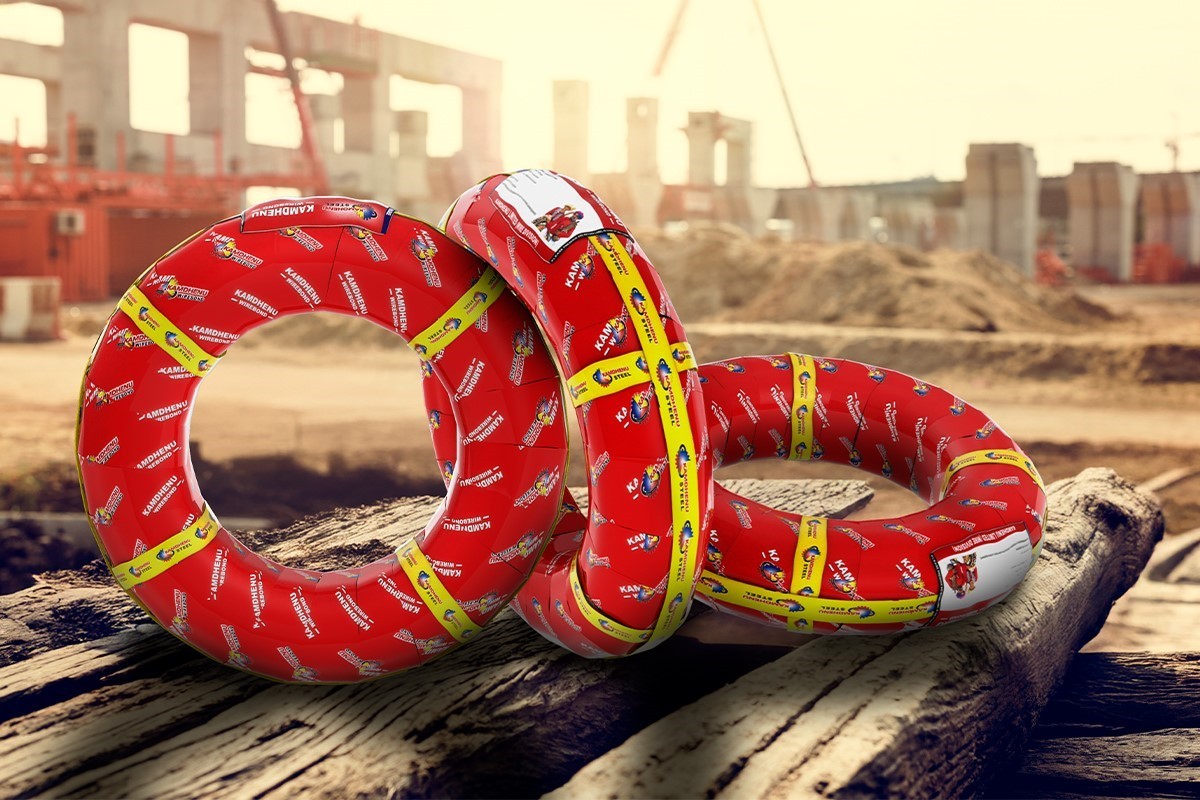Why Binding Wire Is the Unsung Hero of Construction – And How to Choose the Right One?
In the context of India’s burgeoning construction industry, the more conspicuous items, such as TMT bars, cement, bricks, and concrete,...

In the context of India’s burgeoning construction industry, the more conspicuous items, such as TMT bars, cement, bricks, and concrete, capture the most attention. In contrast, seasoned site supervisors and experienced builders understand that even the smallest details matter, as they can make or break a structure. One such detail that is overlooked most is binding wire.
For Indian homeowners, contractors, and property developers, especially those in the older age bracket who have been involved in projects from the ground up, grasping the importance of binding wire in construction is critical for achieving long-term durability and craftsmanship.
What Is a Binding Wire And Its Uses?
Binding wire is a type of wire made from mild steel, specifically annealed carbon steel, that serves an important role within reinforced concrete (RCC) work by tying TMT bars at their intersections. Of utmost significance during the reinforcement stage is the positioning of bars, which must be exact due to the pouring of concrete. The binding wire guarantees that this alignment is held until concrete solidification.
There are binding wires and barbed wires which are not equipped with binding wires. Without appropriate wiring, there is a chance that bars will shift positions, which will greatly compromise the structure’s ability to bear loads, barring cracks in the slabs, and long-term damage to the structure’s stability.
Important Technical Factors
In terms of binding wire, certain properties need to be understood that have an impact on performance.
1. Diameter:
Diverse widths fall between 0.61 mm to 1.22 mm. In India, the most used diameter is 0.91 mm as it offers a good balance between strength and flexibility.
2. Tensile Strength:
Reinforcing wire needs to be strong enough to withstand pulling, but also ductile enough to be twisted with bare hands or with simple pliers without snapping. Typical tensile strength sits between 300 – 450 N/mm².
3. Weight and Gauge:
As a rule, 1 kg of binding wire is needed for every 90-100 kg of TMT bars. This ratio varies based on the type of structure and tying arrangement.
4. Coating and Finish:
Wires come in two forms: black (plain) and galvanised. Galvanised wires have greater rusting resistance, particularly in coastal construction or regions of high moisture.
Function of Binding Wire within Building Construction Procedures
Binding wire in construction is not limited to slab and beam work; it also applies to:
- Column cages
- Footings and foundation reinforcements
- Retaining walls
- Stirrups and ties in structural elements
- Bar supports or shuttering prop supports
If binding is not done properly, the concrete load may not distribute evenly, resulting in uneven stress on the structure, which may crack or fail under load or seismic movement.
Furthermore, in multi-storey buildings or complicated beam-column grids, the position of steel members within the structure has to be accurate and binding wire helps achieve that accuracy in multi-storey buildings silently yet crucially.
Common Problems Associated with Poor Quality Binding Wire
Even though binding wire is a small item in the overall budget, it is obvious that these savings will not justify the problems which arise because of using cheaper materials.
- Breaks while twisting: Causes delays and material wastage.
- Low strength: Fails to secure TMT bars during concrete pouring due to vibrations.
- Rust prone: Cheaper black wire weakens the reinforcement due to corrosion within humid regions.
- Inconsistent gauge: Wire of unequal thickness leads to inconsistent tying and structural stability.
This is why, alongside ease of handling onsite, guaranteed compliance with Indian Standards (IS) and a good performance over time, gives peace of mind when purchasing annealed wire from reliable manufacturers.
How To Pick A Binding Wire With The Right Properties
1. Check For Certification: ISI certification mark on the wire ensures compliance to the IS:280 norms for mild steel wire products.
2. Look For Annealing Uniformity: Wires that are well-annealed are more pliable and therefore reduce the workload of tying the wire.
3. Brand Reputation: Wire from reliable manufacturers is bound to perform better when it comes to QC, uniformity of the wire and its corrosion resistance.
4. Purchase According To Project Specifics: Select galvanised or rust-coated wire for marine or industrial projects.
5. Request Test Certificates: For bulk orders, mechanical property test certificates assure adherence to required standards.
Cost Factors
Typically, the expense of binding wire contributes to approximately 0.3%–0.5% of the total steel cost in any RCC project. While this percentage seems small, inaccuracy during the reinforcing process deteriorates quality and subsequent material waste along with delays.
You would require around 50-55 kg of binding wire in a standard 1,000 sq. ft. residential unit with 4-5 MT steel. A trivial compromise of strength or quality here could derail dozens of junctions across slabs, columns, and beams being tied with grout.
Takeaways
In a well-constructed building, it’s often the elements you don’t see that make a world of a difference. While binding wire is certainly an overlooked detail, its importance aids the structural rigidity in RCC buildings. From a single-storey house in a village to commercial buildings in cities, these structures depend on how and with what the reinforcement steel is bound for their alignment and anchorage.
Whether one understands the details of the steel industry or has experience with construction projects, aspects like the binding wire in construction guarantee safety and long-term security. Just like TMT bars and structural steel, this too needs to be given proper attention, and this is because the robustness of any given structure relies on the robustness of all the joints.


